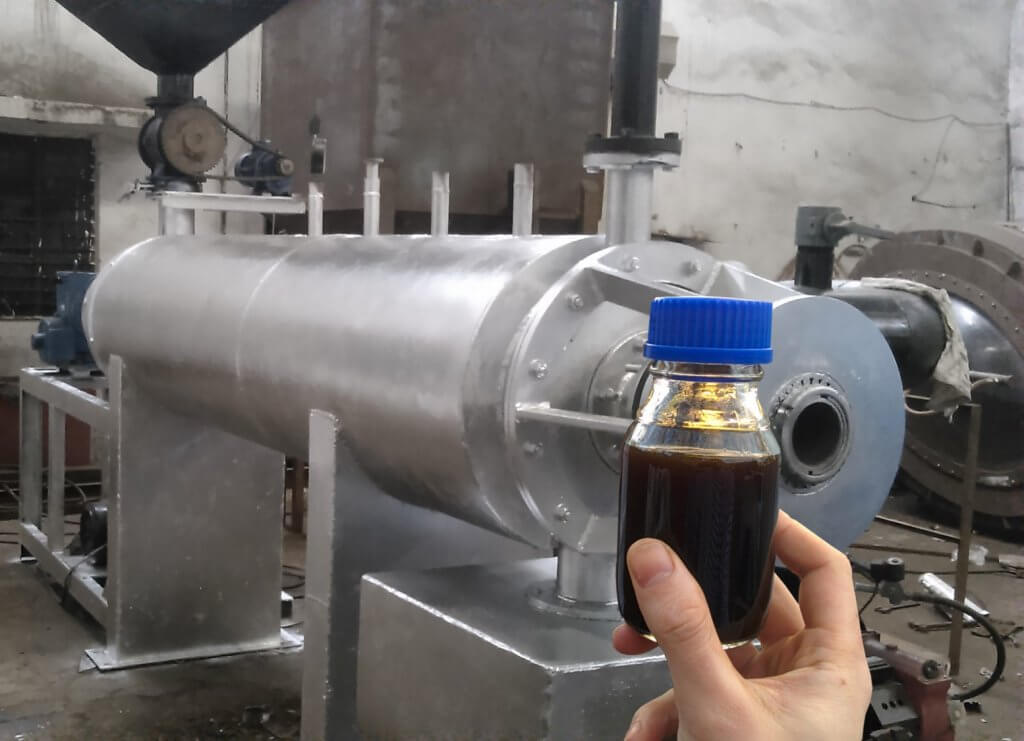Turning smelly sludge into useful fuel

In Innovation Spotlight, we explore some of the most promising innovations from around our community. This week, we take a look at Mash Biotech, a Danish company that has come up with new uses for sewage sludge, using pyrolysis technology to turn the dry waste into gas, oil and fertiliser.
Most cities rely on water treatment works to process sewage and wastewater. Waste from cities is piped to the treatment plant, where solids are separated from the water, which is cleaned and discharged into rivers or the sea. The sludge from the solids, when dry, usually has just two options for re-use, to go to incineration or be transported offsite for landfill, which costs money and emits greenhouse gases.
We caught up with Mash Biotech project manager Lise Højgaard to discuss the company’s challenges and ambitions.
How does the technology work?
When we have dry sludge, we put it in the reactor and pyrolysis (a thermochemical process that decomposes organic material at high temperatures without oxygen) works the sludge to a very high temperature in a short space of time. It turns into a gas, and after a while we cool it down so these structures become oil.
The gas is used to power the pyrolysis process, producing a bio-oil that can be used as fuel and a nutrient rich fertiliser, which is given to local farmers. The process reduces the overall amount of sludge by 50 per cent, reducing the treatment plant costs to dispose of what can be a hazardous material.
What sort of challenges is Mash Biotech up against?
We need to have a very dry feedstock. In Denmark, we have the technological infrastructure to do this, but the challenge is that it’s really expensive. Now, at least we’d rather do it in other parts of the world where labour is cheaper, where we can develop the technology, then we can get good at it, bring it back to Europe and do it here.
That’s the challenge in Europe in general, you either have to do it on a really large scale, or set up a really good system to make it feasible. With feedstock wastewater, you never really know what you get. Each batch has a different composition of different materials.
Sometimes it has a high calorific value, other times not so much, so if we need to run a continuous reactor over the year with a continuous output that’s not really possible because it’s different all the time. It means our reactors have a basic design, and for each application of feedstock, it has to be modified a bit and that’s difficult because no one solution fits all. We have to modify [the reactor] to fit the feedstock.
How is Mash Biotech developing as a business?
We are focusing on markets like India and Africa, where there is a lot of available waste. They can make the technology more robust and more simple for areas that don’t have the technological infrastructure. Right now, we are trying to scale the reactor to run 15 tonnes per day, but we’re not there yet quite. We sell to the industry for heating purposes.
I was in Kenya a few weeks ago where we are looking into using the bio-oil in their diesel generators. At the moment, we are giving away the fertiliser away for free, but with time if we can refine it, that’s something we’ll also look into selling.
Another thing we are exploring is the use of an invasive tree species [as a feedstock for pyrolysis], seeing what the business case is. My focus right now is not so much about technology development, but setting up all the logistics of a new business in Kenya. I was there talking about potential collaborations.
What is your area of work within the firm?
I currently work for MASH Biotech as project manager. As is typical in start-ups, I have a variety of tasks which are developing all the time. I have been involved in several grant proposals for both European and Danish rounds, resulting in funding, which among other things has funded my employment. I also work with students. If they’re doing a project with MASH, I introduce them to the technology and what we do, and try to help guide them when it comes to natural science.
What are the public perceptions of what you do?
(Laughs) When I think about waste and sludge, I see a resource and I get really excited. Other people don’t really feel that way. In India, we are giving the fertiliser away for free to build a reputation among locals because many people don’t want to work with it. It’s definitely not sexy to work with sludge, and of course, it smells. When I talk with my friends about it, they wrinkle their nose and say, “You work with making shit into oil?” I think that’s absolutely wonderful.
What’s your background?
I studied a Masters in Biotechnology, part of the Climate KIC Masters label programme. After finishing my studies, I was really interested in doing an internship in one of the start-ups that I’d come across through Climate KIC. My internship started in the middle of January, and from the beginning I was really excited to be here, because I got a chance to do so many different things just after graduation.
After two months of internship I got a contract. Normally you’d choose to work for a big biotech company in Denmark, and it would be years before you could go out and do what I do now. I also participated in Climate KIC’s Journey education programme last summer — it really inspired me to be an entrepreneur.
We spent two weeks in Trondheim, talking with many entrepreneurs, which was great, but there weren’t any women telling us about what they did. In cleantech, there are few start-ups founded by women. It’s made me really determined to make a difference.
